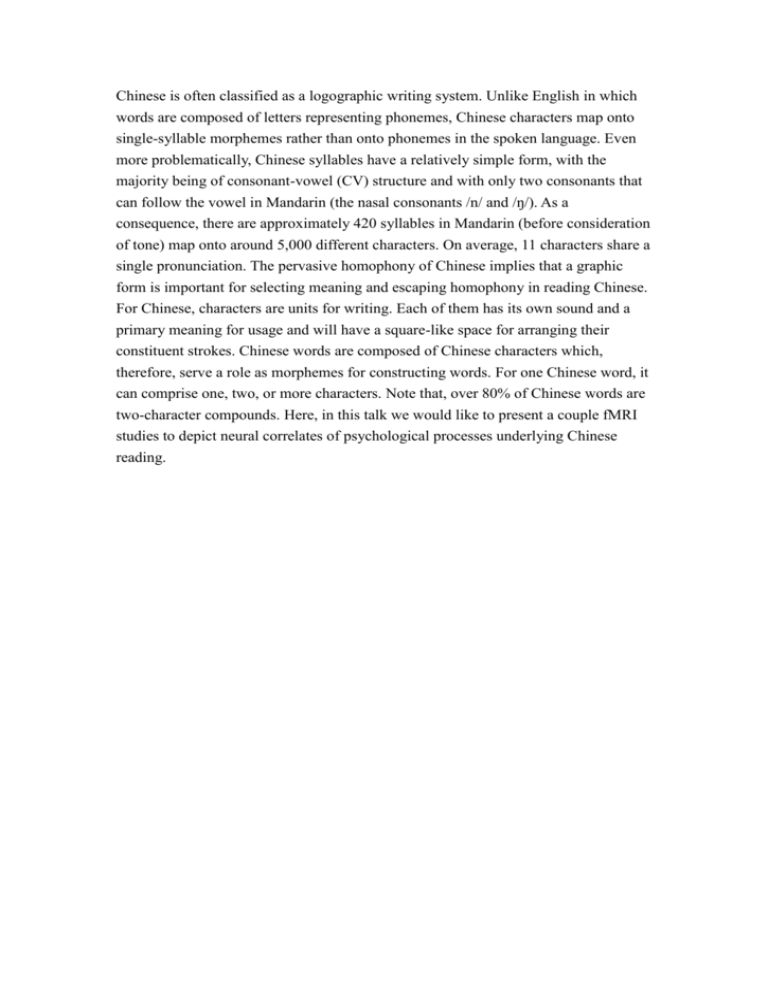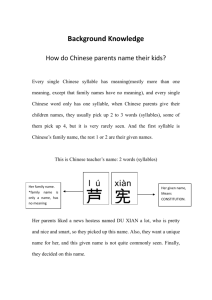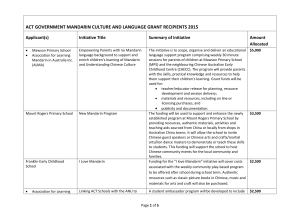Chinese is often classified as a logographic writing system. Unlike
advertisement

Chinese is often classified as a logographic writing system. Unlike English in which words are composed of letters representing phonemes, Chinese characters map onto single-syllable morphemes rather than onto phonemes in the spoken language. Even more problematically, Chinese syllables have a relatively simple form, with the majority being of consonant-vowel (CV) structure and with only two consonants that can follow the vowel in Mandarin (the nasal consonants /n/ and /ŋ/). As a consequence, there are approximately 420 syllables in Mandarin (before consideration of tone) map onto around 5,000 different characters. On average, 11 characters share a single pronunciation. The pervasive homophony of Chinese implies that a graphic form is important for selecting meaning and escaping homophony in reading Chinese. For Chinese, characters are units for writing. Each of them has its own sound and a primary meaning for usage and will have a square-like space for arranging their constituent strokes. Chinese words are composed of Chinese characters which, therefore, serve a role as morphemes for constructing words. For one Chinese word, it can comprise one, two, or more characters. Note that, over 80% of Chinese words are two-character compounds. Here, in this talk we would like to present a couple fMRI studies to depict neural correlates of psychological processes underlying Chinese reading.






